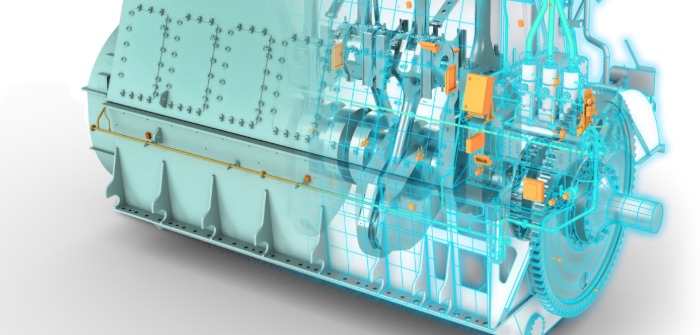A contract has been awarded to WinGD to integrate hybrid energy systems on four new-build car carrier vessels for Japanese owner NYK Line.
The pure car and truck carriers’ (PCTC) propulsion systems run on LNG and consist of WinGD’s 7X62DF-2.1 two-stroke engines coupled to shaft generators, DC-links and battery systems. Spinning reserves, peak shaving and energy flow have all be optimized by WinGD to ensure the engine runs in its sweet spot constantly to avoid inefficient generator loads.
System integration and system-level energy management will be carried out by WinGD and managed through the company’s new Hybrid Control System. Furthermore, LNG-battery configuration is expected to reduce overall CO2 equivalent emissions by an estimated 40% compared with ships that utilize heavy fuel oil to operate. This ensures the vessels will exceed IMO’s 2030 target for the reduction of greenhouse gas emissions.
“Battery hybrid technology improves fuel efficiency and emissions by mitigating main engine and electrical generator load fluctuations,” said Keita Fukunaga, deputy manager, ship design team and technical group, NYK Line. “This project is an important step in our plan to replace current vessels to newly built LNG-fueled PCTCs, reducing the fleet’s carbon intensity by 50% by 2050. We are delighted to contract with WinGD to integrate this innovative power and propulsion arrangement.”
“An appropriately controlled hybrid energy system is emerging as one of the most cost-effective solutions for deep-sea vessels to meet future environmental targets, combining the high efficiency of low-speed two-stroke engines with optimally sized electric drives, machines and energy storage units,” added Stefan Goranov, program portfolio manager, digital and hybrid. “This important landmark showcases WinGD’s core engine development expertise and the extensive investments we have been making to understanding how to optimize the operational characteristics of integrated hybrid systems.”
China Merchants JinLing Shipyard (Nanjing) will build the vessels for delivery in 2023, before carrying out vehicle transport operations between Europe and the Middle East.



